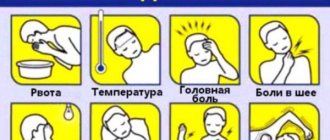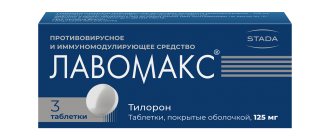Features of herpetic infections
Herpes is a viral infection that is characterized by a variety of clinical manifestations and can affect various systems, organs, and tissues:
- nervous system;
- genitourinary system;
- skin and mucous membranes;
- eyes.
Herpetic infections are characterized by lifelong persistence—preservation in the host’s body. With any weakening of the immune system, the virus reactivates and the disease worsens. Exacerbation of infection can be caused by a variety of factors:
- overwork;
- hypothermia;
- stress;
- inadequate sleep;
- change in the climatic zone of residence;
- solar insolation;
- colds.
The severity of symptoms depends on the type and form of the virus. When the nervous system is damaged, the disease can lead to inflammation of the membranes of the spinal cord and brain and other dangerous complications. Therefore, it is very important to diagnose the infection in time and begin adequate therapy.
Introduction
According to the World Health Organization, up to 90% of the world's population is infected with the herpes simplex virus. It can remain in the body for a long time without showing itself at all. With a decrease in immune strength, the disease makes itself felt in the form of colds on the lips, rashes on the mucous membranes of the nasal cavity, eyeball and genitals. Content:
- Classification and clinic of herpes
- Causes
- Routes of transmission of the herpes virus
- Prevention and treatment of the disease
- Precautionary measures
- Should you see a doctor?
Herpes is a common and very unpleasant problem. It is impossible to completely remove it from the body, but you can take the right preventive measures and prevent the development of the disease.
Methods of infection with viruses
Infection with viruses can occur through airborne droplets, household contact, sexual contact and blood contact. Infection is possible both from patients and from carriers of the virus. The infection persists for a long time in a dried state and can be easily transmitted through household items: cups, towels, toys. The virus also spreads through saliva, blood, vesicle contents, semen, vaginal secretions and other body media.
Infection often occurs in the form of autoinoculation, which involves mechanical transfer of viral particles from one site to another. For example, the virus can spread through the skin and mucous membranes when scratching.
Susceptibility upon contact is quite high. It is believed that about 90% of the adult population are carriers of one type or another of herpes and up to 25% suffer from recurrent forms. As a rule, when examining frequently ill children and adults, several herpes viruses are detected at the same time.
How long does the virus live?
Fully formed and ready for subsequent reproduction, “daughter” infectious virions appear inside the infected cell after 10 hours, and their number becomes maximum after 15 hours. During its entire life, the primary (“mother”) viral particle reproduces from 10 to 100 “daughter” ones. viral particles, and 1 ml of the contents of a herpetic vesicle contains from 1000 to 10 million viral particles. Virions are extremely thermostable - they are inactivated (destroyed) at 50-52 degrees for 30 minutes, at 37.5 degrees for 20 hours, stable at 70 degrees, and remain in tissues for a long time. On metal surfaces (coins, door handles, water taps) it survives for 2 hours, on plastic and wood - up to 3 hours, in damp medical cotton wool and gauze during the entire drying time at room temperature (up to 6 hours). A unique biological property of viruses is the lifelong preservation of viruses in a modified form in the nerve cells of the regional (relative to the site of virus introduction) ganglia of sensory nerves. The most active herpes simplex viruses (labial and genital) in this regard, the least active are the Epstein-Barr virus.
All known varieties of viruses are capable of recurrence . For example, recurrence of infections caused by the herpes simplex virus is often observed against the background of stress, nonspecific endocrine disorders, changes in the geographic area of residence, increased solar radiation, etc. Asymptomatic relapses of cytomegalovirus infection are most often observed in pregnant women and patients receiving immunosuppressive and hormonal therapy . In general, herpetic infections take a recurrent course in no more than 8-20% of patients with obvious malfunctions of the immune system.
Herpes viruses can lead to infection of the fetus during pregnancy. Pregnancy is very often a physiological immunosuppressive factor (there is a natural decrease in immunity). In the cervical canal of pregnant women, the risk of intrauterine infection of the fetus, as well as infection of the child during childbirth, significantly increases. The virus is the most common sexually transmitted infection in pregnant women. Therefore, before an expected pregnancy, we recommend that expectant mothers be examined for the presence of herpes simplex virus and cytomegalovirus infection on the mucous membranes of the genital organs, determine the presence and level of antibodies to these viruses, and, if necessary, receive a course of preventive treatment.
Organs and systems of the body that can be affected by the herpes simplex virus and the diseases it causes:
- Optic tract (keratitis, iridocyclitis, chorioretinitis, optic neuritis, phlebothrombosis)
- ENT organs (pharyngitis, “herpetic sore throat”, laryngitis, external ear, sudden deafness, vestibular disorders)
- Oral organs (stomatitis, gingivitis)
- Skin and mucous membranes (face, lips, genital herpes, etc.)
- Lungs (bronchopneumonia)
- Cardiovascular system (myocarditis, myocardiopathy, participation of HSV in the processes underlying atherosclerosis)
- Gastrointestinal tract (hepatitis, ileo-colitis, proctitis)
- Female genital organs (colpitis, intrauterine HSV infection: endometritis, amnionitis, chorionitis, metroendometritis, reproductive dysfunction)
- Male genital organs (prostatitis, urethritis, sperm damage)
- CNS (encephalitis, sympathoglioneuritis, nerve plexus damage)
- Psycho-emotional sphere (depression, aggravating influence of HSV on the course of hydrocyanic dementia and nuclear schizophrenia)
- Lymphatic system (HSV lymphadenopathy)
Types of herpes virus infections
More than 100 representatives of the herpetic family of viruses are known. However, most often a person is affected by 8 of them. Let us consider in detail the features and symptoms of the most common infections.
Herpes simplex virus types 1 and 2
The herpes virus type 1 causes blistering rashes on the mucous membranes of the lips and nose. As a rule, infection occurs in childhood. By the age of 5-7 years, more than 50% of children are carriers of the infection. Infection often occurs from sick parents: through kisses, household items.
The incubation period lasts from 2 days to 2 weeks. In addition to the characteristic rashes, the infection may be accompanied by elevated body temperature and enlarged local lymph nodes. After damaging the mucous membranes, the virus reaches the trigeminal nerve, where it can remain latent for a long time.
Herpes simplex virus type 2, or genital herpes, is primarily transmitted through sexual contact. In Russia, the average is 20% among the adult population. In European countries, the incidence rate is even higher. The risk group includes people who have promiscuous sex. Most infections occur during puberty, at the beginning of active sexual life.
Symptoms of the virus include:
- blistering rashes on the genitals;
- enlargement of regional lymph nodes;
- painful urination;
- itching in the groin area;
- elevated body temperature.
The disease can occur with frequent relapses (6-12 times a year or more).
Herpes virus type 3
This virus can cause two diseases: chickenpox and herpes zoster. As a rule, chickenpox occurs in childhood and is accompanied by characteristic symptoms:
- vesicular rash that lasts about 10 days;
- high body temperature, fever;
- headache;
- itching of the skin;
- symptoms of body intoxication.
Chickenpox in adults occurs rarely and can occur in a more severe form: with damage to the eyes and nervous system. In such a situation, a person requires urgent hospitalization. After the disease, the virus remains in the body for life, remaining latent in the nerve ganglia.
Vaccination is the most effective way to prevent the disease in children and adults who did not have chickenpox in childhood and were not vaccinated against it. Vaccination is given to children from one year of age. The immunobiological drug is administered twice with an interval of 6 weeks. Vaccination is also carried out as an emergency measure in the first three days after a person comes into contact with a patient with chickenpox.
Typically, herpes zoster occurs in people over 65 years of age. The disease is severe and is accompanied by severe symptoms:
- severe pain;
- sleep disturbance;
- high temperature;
- vesicular rashes that appear along the nerve endings.
The disease has a rather difficult rehabilitation period. Even after the rash disappears, a person may remain sore for a long time in those areas that were affected by the infection. In all civilized countries of the world, elderly people are vaccinated to prevent herpes zoster.
Epstein–Barr virus
Herpes virus type 4 or Epstein-Barr virus affects the human body in a complex manner, provoking various and sometimes unrelated pathologies. The virus can cause infectious mononucleosis, lymphoma, hepatitis, affect the nervous and immune systems, and the hematopoietic apparatus.
In the human population, infection with the Epstein-Barr virus reaches 75% or higher. Children over two years of age and adults under 30 years of age are at risk. Children under one year of age rarely get sick due to passive immunity received from the mother.
The symptoms of the disease are many-sided and can have various manifestations: from mild discomfort to severe health problems. The most common symptoms of the disease are:
- high temperature, fever;
- sore throat, muscles;
- enlarged lymph nodes, liver, spleen;
- the appearance of rashes, peeling, inflammation, bruising on the skin;
- photophobia;
- nausea.
It is characteristic that the use of antibiotics does not affect the duration of fever.
Herpes virus type 5
Cytomegalovirus infection, caused by herpes virus type 5, occurs in both children and adults. It can occur as a mononucleosis, with high fever, intoxication, purulent sore throat, and damage to the salivary glands. In addition, the infection may be asymptomatic.
There are also congenital forms of the disease, which often lead to the development of hearing loss, microcephaly in the child, cause enlargement of the liver and spleen, and hematological disorders.
Herpes viruses type 6 and 7
The range of diseases caused by these viruses is diverse. Often infections occur in the form of a sudden exanthema. Hepatitis virus type 6 can provoke chronic fatigue syndrome and infectious mononucleosis. It is believed that a consequence of viruses can be a lymphoproliferative process (the formation of tumors of the lymphatic system).
As a rule, sudden exanthema affects children under two years of age. The disease occurs with high fever and intoxication of the body. Febrile convulsions may occur and a rash appears, which goes away on its own after a few days.
Chronic fatigue syndrome (CFS) is accompanied by rapid fatigue and decreased performance. Patients are concerned about low-grade fever, enlarged lymph nodes, and the appearance of catarrhal manifestations in the pharynx.
Herpes: symptoms, diagnosis and treatment
Itching, soreness, redness of the skin, blisters... Really again? Those who have encountered it more than once will “recognize” these symptoms as manifestations of herpes. What kind of virus is this? For what reasons does he regularly harass some people?
Our interlocutor, candidate of medical sciences, dermatovenerologist at the Expert Tula Clinic, Vladislav Leonidovich Sheinkman, told us about this and much more.
— What is herpes and how common is it among the inhabitants of our country?
This is a group of diseases caused by herpes viruses. One of the most common types is the herpes simplex virus, which is divided into herpes types 1 and 2, as well as the varicella zoster virus and herpes zoster virus.
Almost all people in Russia are infected with the herpes simplex virus. Once the virus enters the body, it never leaves it. Usually it is in the body in an inactive, “sleeping” state and does not bother a person.
— Is herpes a fungus, a virus or a bacterium?
It's a virus.
— Where does the herpes virus hide in the body?
Herpes simplex viruses are usually found in the so-called nerve ganglia (for example, in the trigeminal ganglion, sacral ganglia).
— How does infection with the herpes virus occur? Who is at risk for herpes infection?
Infection usually occurs in childhood. There are several ways of infection. This is airborne, contact household (dishes, household items, etc.), sexual.
What is immunity and how to increase it? Allergist-immunologist at Clinic Expert Smolensk tells
Chemova Ulyana Vladimirovna
The risk of virus activation occurs in the presence of so-called cofactors. These include weakened immunity, emotional distress, stress, alcohol consumption, climate change (for example, travel), menstruation, prolonged exposure to the sun or hypothermia, the presence of infection (ARVI, pneumonia, sinusitis, etc.).
Is it possible to treat sinusitis without a puncture? Otolaryngologist at the Expert Kursk Clinic, Candidate of Medical Sciences Alexandra Nikolaevna Emelyanova tells
— Tell us about the most common symptoms of herpes
Herpes occurs cyclically in the body, and its symptoms depend on the stage of the process.
The first, so-called prodromal stage, is characterized by burning, itching, and a tingling sensation in the area of future localization of herpes manifestations. The duration of this period can be several hours.
In the second stage, redness and thickening of the skin or mucous membrane appear in the form of a spot (erythematous stage). This stage of herpes lasts about a day.
At the third stage, small bubbles (2-3 mm in size) appear, which can “merge” with the serous or serous-purulent contents. Depending on the severity of the flow, the number of bubbles may vary.
In the fourth stage, the blisters break open and painful ulcers form in their place. This stage of herpes lasts several days and is the most contagious to others.
By the fifth stage, the ulcers dry out and form crusts.
And finally, at the sixth stage, the crusts fall off and the skin or mucous membrane is restored.
With type 1 herpes simplex virus, manifestations occur on the skin and mucous membranes of the upper half (for example, the lip area, nasolabial fold, neck), and type 2 - on the lower half of the body (otherwise it is called “genital herpes,” although Other areas may also be affected - for example, the buttock area, etc.).
In the recurrent form, the localization is usually stable.
— Is herpes on the lips contagious to others?
Absolutely yes.
— Does a herpetic infection always manifest itself with pronounced symptoms, or may a person not suspect that he is a carrier of the infection?
If a herpetic infection is also understood as a pure carrier state, then symptoms may not always be present. If a person has a strong immune system, he may not even know that he has such a virus.
The manifestations of exacerbation also vary from person to person. People with a normal but temporarily slightly weakened immune system, or those receiving some kind of antiviral treatment, may have a different severity of symptoms than a person with a severe illness (for example, tuberculosis), a severely weakened immune system (for example, HIV infection, chemotherapy, for organ transplants, etc.).
What are the symptoms of tuberculosis? Read more
— How is the herpes virus detected in humans?
Diagnosis of herpesvirus infection is primarily based on an examination by a dermatovenerologist.
To confirm the diagnosis, laboratory methods may be prescribed by the doctor. Some of them are used to detect the virus itself, while others are indicators of the immune response to the virus.
To search for the virus itself, polymerase chain reaction (PCR) is used, when material is taken from the site of the lesion and examined for the presence of virus nucleic acids.
An enzyme-linked immunosorbent assay (ELISA) is used to confirm the presence of an immune response against the virus. Imagine this situation. A person does not have any manifestations of herpes, and besides, he does not remember whether he ever had them or not. How to find out whether an organism has “met” the virus or not? If, when performing ELISA, specific antibodies are detected - immunoglobulins of class G (IgG) against the herpes virus, this means that there was once an infectious process, and the virus is currently in an inactive state. These antibodies are usually found throughout a person's life. If there is a suspicion of virus activation, then, in addition to PCR, an analysis for class M immunoglobulins (IgM) may be prescribed according to indications. The detection of this type of antibody indicates an exacerbation of the process. Outside of an exacerbation, only IgG is detected.
— For whom can the herpes virus be dangerous?
First of all, these are persons with serious diseases (for example, tuberculosis, oncological pathologies, immunodeficiencies). In them, the manifestation of herpes can be severe, affecting areas that are not usually found under other conditions (for example, the optic nerve).
— How to get rid of herpes? Is it enough to use only ointment or cauterize the wounds with brilliant green?
This depends on a number of factors - in particular the prevalence of the process, the frequency and severity of relapses. Often local treatment is not enough. There are certain standards and principles for the treatment of herpes, which consist in the use of antiviral drugs and agents to improve/correct the functions of the immune system.
— There are recommendations on the Internet to use tea bags or sage infusion to relieve itching from herpes. Do traditional methods really help in treating herpes infections?
The use of such methods may complicate the doctor’s work, i.e. making the correct diagnosis and prescribing effective treatment.
— What could be the consequences if herpes is not treated?
Mainly - frequent relapses, with the appearance of more common forms during exacerbations, with more severe symptoms.
— What specialty does a doctor treat herpes?
Dermatovenerologist.
You can make an appointment with a dermatovenerologist here
Please note: the service is not available in all cities
— Are effective methods of preventing herpes known to modern medicine?
Undoubtedly. It is necessary to identify and eliminate cofactors that lead to exacerbation of herpes. The main ones are stress, hypothermia or overheating, excessive alcohol intake, exposure to the sun, climate change and a number of others.
For reference:
Sheinkman Vladislav Leonidovich
Graduate of the pediatric faculty of the Smolensk State Medical Institute in 1994.
From 1994 to 1995, he completed an internship, and from 1996 to 1998, a clinical residency in the specialty “Dermatovenereology”.
Has an academic degree of Candidate of Medical Sciences.
Currently working at Clinic Expert Tula LLC as a dermatovenerologist. Provides reception at the address: st. Boldina, 74
Herpes virus type 8
Herpes virus type 8 can cause Kaposi's sarcoma and Castleman's disease. Kaposi's sarcoma is a serious pathology that is accompanied by the appearance of malignant skin tumors. It is quite difficult, especially with immune deficiency. May be complicated by inflammation of the mucous membrane of the palate and lymph nodes.
Castleman's disease is a rare disease in which fever, enlargement of the liver and spleen, anemia, and a sharp decrease in body weight are observed.
Treatment of herpes
VACCINE “VITAGERPAVAC”
against herpes simplex virus (HSV) serotypes Ι and ΙΙ
Relapses that affect the lips or nasal mucosa respond well to local treatment with cream or ointment. In more severe cases, your doctor may recommend pills.
It must be remembered that early initiation of herpes treatment is the key to success. Before the bubbles appear, the lips become very sensitive, itching and tingling occur. And if the disease begins to be treated at the stage of these precursors, then rashes may not appear, and recovery will occur as soon as possible.
Today there are no drugs that would completely destroy the herpes virus in the human body. However, there is a group of special antiviral agents that effectively suppress the reproduction of HSV-I.
If you start using antiviral cream for existing rashes, healing occurs faster than with other treatment methods.
Taking tests to diagnose herpes and CMV infection.
INITIAL CONSULTATION
from 2,500 rub.
Diagnosis of herpes virus infections
The most informative laboratory tests for diagnosing herpesvirus infections are the PCR method and enzyme-linked immunosorbent assay. Depending on the location of the infectious process, blood, saliva, scrapings from the urethra, cervical canal, and vesicles can be examined.
During the diagnosis, the qualitative and quantitative content of immunoglobulins M and G is determined, as well as avidity, an indicator that can be used to assess how efficiently the immune system copes with the virus.
For more successful treatment, a general examination of the body is additionally performed to identify chronic infections. Sluggish chronic pathologies of the genitourinary, respiratory, digestive and other systems can support and cause exacerbation of herpesvirus infections.









